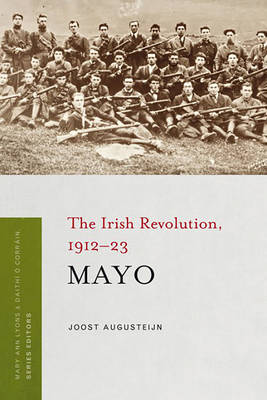
- Afhalen na 1 uur in een winkel met voorraad
- Gratis thuislevering in België vanaf € 30
- Ruim aanbod met 7 miljoen producten
- Afhalen na 1 uur in een winkel met voorraad
- Gratis thuislevering in België vanaf € 30
- Ruim aanbod met 7 miljoen producten
Zoeken
€ 30,45
+ 60 punten
Omschrijving
This study of Co. Mayo during the revolutionary period examines all aspects of life of the county during a period of extreme upheaval. Augusteijn utilizes a wide array of sources, including memoirs of and interviews with former IRA men and women, newspaper reports, police records and other official documents from the British, as well as the alternative Sinn Fein led governments. Beginning with a description of the crucial role of the land question in Mayo politics before the First World War, Augusteijn shows how the Irish Party's powerful position (due to its local roots in the Land War) was successfully challenged by Sinn Fein after 1916. The central role that many important figures from nationalist history, like Michael Davitt, William O'Brien, James Dillon, and John MacBride had in local developments is highlighted. The author then discusses the impact of the First World War on the changing fortunes of the various political groupings, as well as on the position of more marginal groups in Mayo including unionists, suffragettes, and labour activists. Central to the book is the process by which a nucleus of activists gradually radicalized and became involved in conflict with the authorities, bringing with them ever-increasing numbers of the Mayo people. How people in their daily lives were affected is another central theme of the book, which ends with the first comprehensive account of events in the Civil War in the county.
Specificaties
Betrokkenen
- Auteur(s):
- Uitgeverij:
Inhoud
- Aantal bladzijden:
- 240
- Taal:
- Engels
- Reeks:
Eigenschappen
- Productcode (EAN):
- 9781846825859
- Verschijningsdatum:
- 15/12/2023
- Uitvoering:
- Paperback
- Formaat:
- Trade paperback (VS)
- Afmetingen:
- 234 mm x 156 mm
- Gewicht:
- 367 g

Alleen bij Standaard Boekhandel
+ 60 punten op je klantenkaart van Standaard Boekhandel
Beoordelingen
We publiceren alleen reviews die voldoen aan de voorwaarden voor reviews. Bekijk onze voorwaarden voor reviews.








